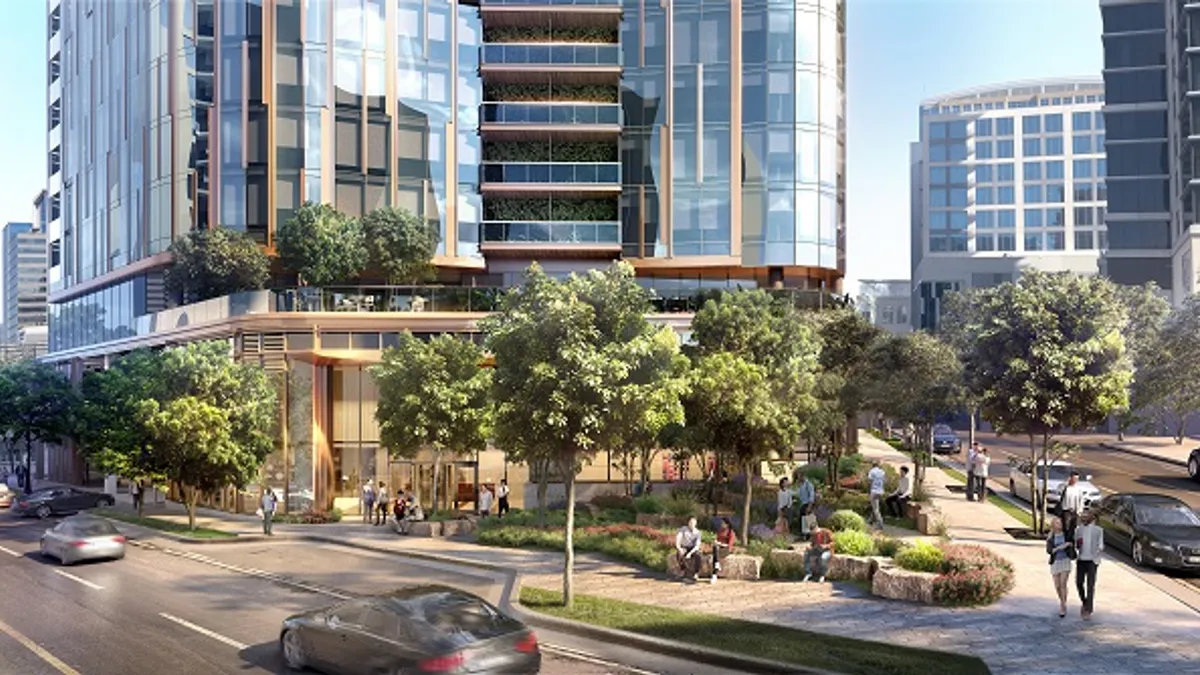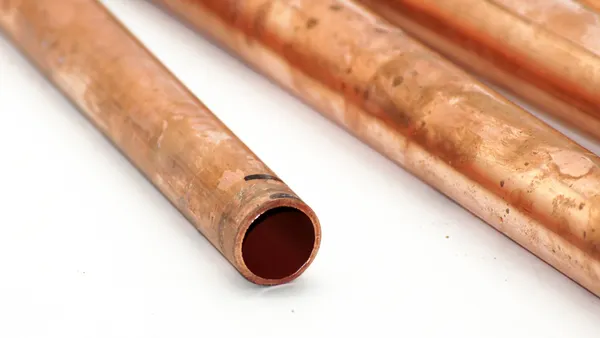Dive Brief:
- Real estate investment firm Rastegar Property Company announced plans to build a "living wall" on its 26-story condo development in Dallas. The wall, made up of more than 40,000 plants, is estimated to capture more than 1,600 pounds of carbon dioxide and produce 1,200 pounds of oxygen each year.
- The wall is expected to cost up to $1 million and will have internet of things (IoT) sensors to monitor the plants' health. In an email to Smart Cities Dive, Zach Smith, founder and CEO of wall and green roof company Zauben, said the living wall will have panels made up of natural mineral wool to "perfectly distribute" water, oxygen and nutrients to the plants.
- Josh Eadie, vice president of real estate at Rastegar, told Smart Cities Dive the wall is part of a broader strategy to add parkland to downtown Dallas, with a pocket park also set to be installed nearby and maintained by the developer. "Our goal is to turn Dallas into a more modern, 21st century green-focused city," Eadie said.
Dive Insight:
Living walls are relatively rare in the United States, but they are starting to grow in popularity as developers look to make buildings' exteriors more environmentally friendly. They are also useful for indoor spaces: One living wall inside an Arlington, VA building was designed and installed as "a great solution for making workplaces more relaxing, drawing upon natural elements to reduce stress," the designer Fox Architects wrote in a blog post.
This living wall in Dallas comes as the city wrestles with climate goals and looks to take action to dramatically reduce its emissions. Last year, Dallas launched a climate action website so the public can find information about its environmental and climate efforts. Following that, the Dallas Office of Environmental Quality & Sustainability (DEQS) unveiled the Comprehensive Environmental and Climate Action Plan (CECAP), which details efforts to reduce greenhouse gas emissions 43% by 2030.
The city warned it is already feeling the effects of climate change in the form of higher temperatures, worsening air quality, floods and droughts, and said those with pre-existing medical conditions may be among those to suffer the most.
While the green wall will not be the only solution to the city’s battle against the effects of climate change, the developer hopes that residents will take pride in the plants, which are low maintenance and a tangible way of helping the planet.
"Now residents have a feeling, or a sense, of, 'These are my plants, I may lease the space, I may own the space,' whatever that may look like, they still have connectivity to the design," Eadie said. "It becomes part of a premium that may be associated with the actual unit itself."
Groundbreaking on the building is expected by year’s end, with the first tenants due to move in 2022. Installation of the wall begin as the building approaches the end of construction.











